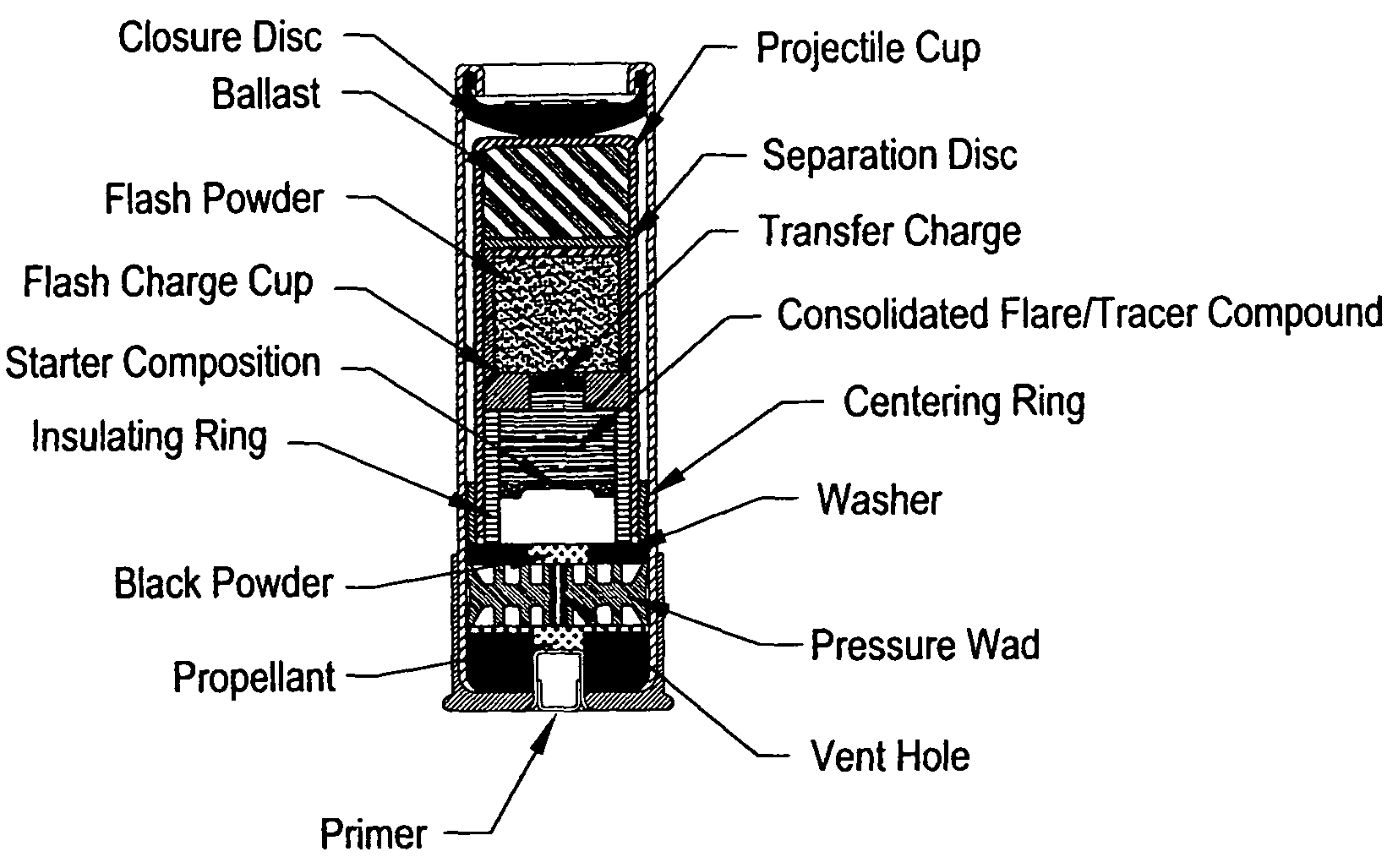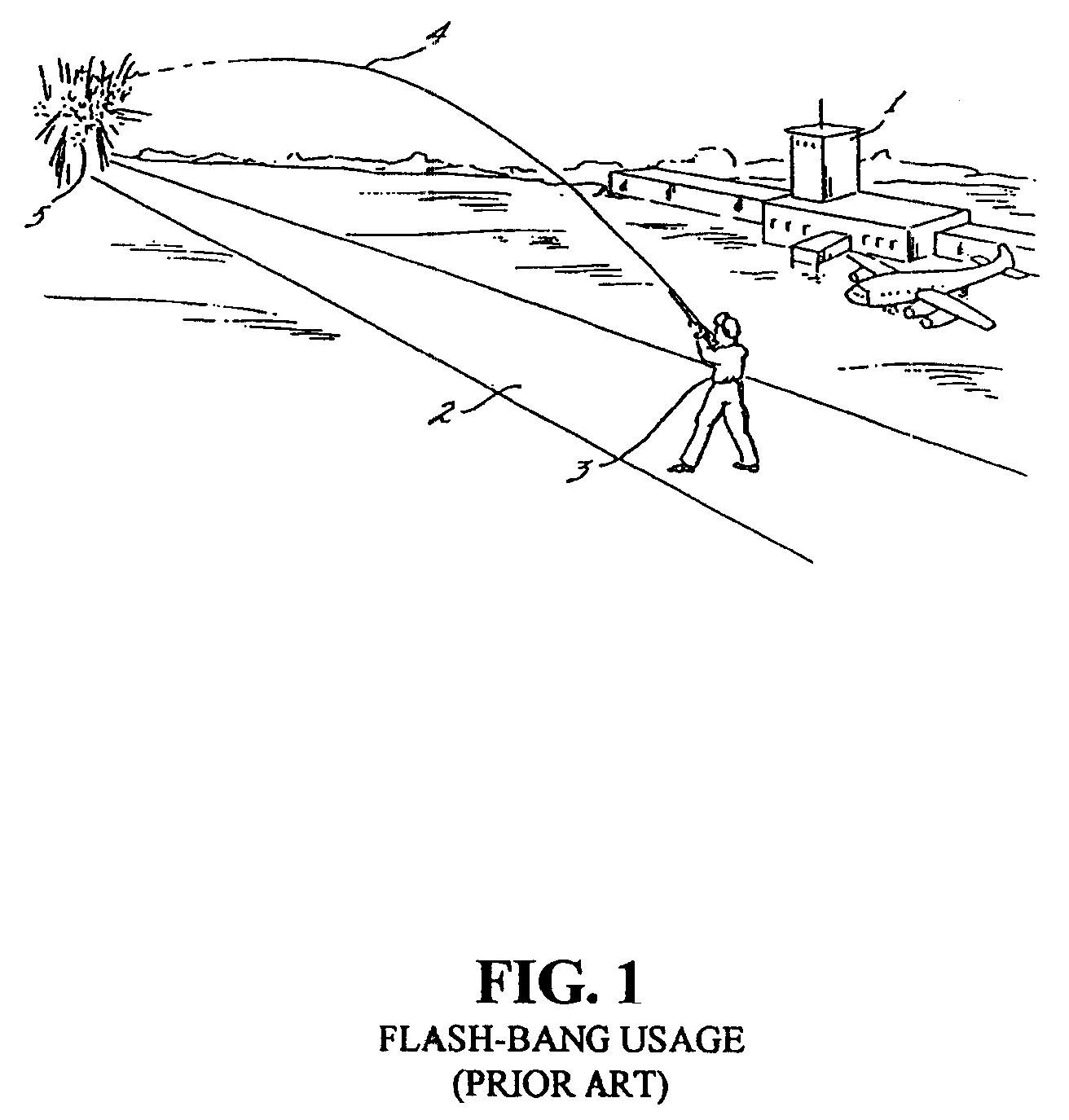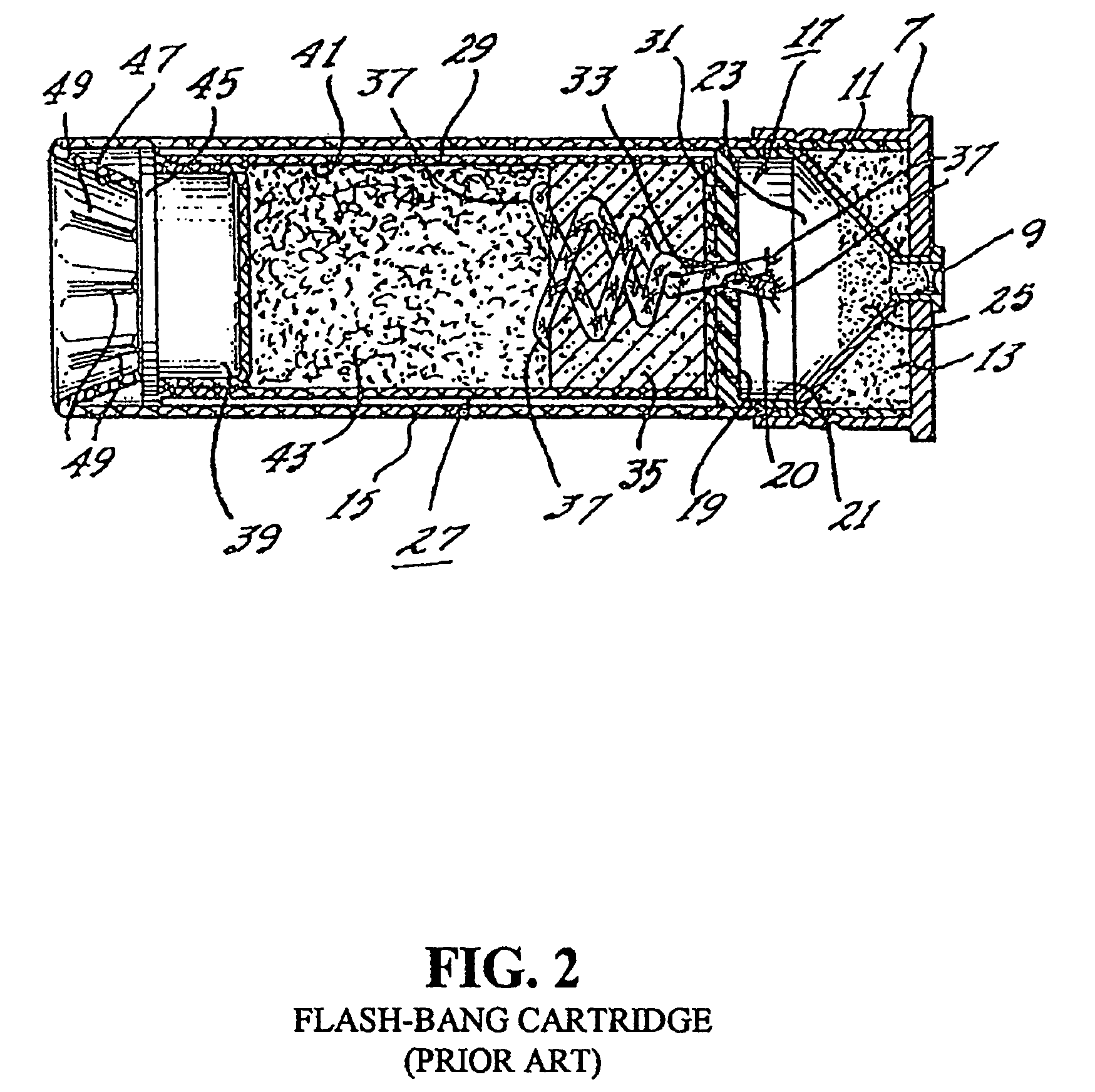Flare-bang projectile
a projectile and projectile body technology, applied in the field of shotgun ammunition, can solve the problems of inaccurate targeting, less than ideal as a less-lethal weapon or deterrent force, and the weighty mass is not disclosed in the projectile for greater distance, accuracy, stability, etc., and achieves greater stability in flight and greater accuracy in targeting
- Summary
- Abstract
- Description
- Claims
- Application Information
AI Technical Summary
Benefits of technology
Problems solved by technology
Method used
Image
Examples
Embodiment Construction
The presently preferred embodiments of the present invention were originally developed in response to a U.S. Marine Corps request for shotgun rounds capable of delivering a “flash-bang”-type air burst at ranges of 400 feet, 600 feet and 800 feet. The rounds were intended for less-lethal use both as a deterrent and as a means for determining the intent of potentially hostile groups at extended stand off ranges. The following design requirements were set forth in the U.S. Marine Corps request:1. Standard shotgun shell cartridges were to be used;2. Standard propelling methods were to be used, i.e., igniting nitrocellulose based smokeless propellants in the shot shell (no miniature rocket motors); and3. Projectile must disintegrate into low energy fragments upon detonation.
There is a key problem when attempting to meet this combination of requirements. The desire for a projectile that can travel up to 800 feet requires a fairly heavy weight as ballast, because a low weight projectile lo...
PUM
 Login to View More
Login to View More Abstract
Description
Claims
Application Information
 Login to View More
Login to View More - R&D
- Intellectual Property
- Life Sciences
- Materials
- Tech Scout
- Unparalleled Data Quality
- Higher Quality Content
- 60% Fewer Hallucinations
Browse by: Latest US Patents, China's latest patents, Technical Efficacy Thesaurus, Application Domain, Technology Topic, Popular Technical Reports.
© 2025 PatSnap. All rights reserved.Legal|Privacy policy|Modern Slavery Act Transparency Statement|Sitemap|About US| Contact US: help@patsnap.com



